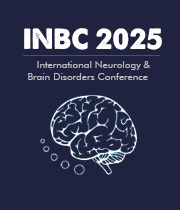Title : Revolutionizing alzheimer’s disease treatment through immunotherapy: The central role of trem2 in microglial activation and neuroimmune regulation
Abstract:
Alzheimer’s disease (AD) has traditionally been defined by the pathological accumulation of amyloid-β and tau; however, recent advances have highlighted the pivotal role of innate immunity, with a growing focus on how microglia influence the course and mechanisms of disease. The triggering receptor expressed on myeloid cells 2 (TREM2), a microglia-specific immunoreceptor, has emerged as a critical regulator of microglial activation, phagocytosis, survival, and lipid sensing. Genetic variants in TREM2 are strongly associated with increased risk for late-onset AD, positioning TREM2 as a central player in neuroimmune signaling. This review synthesizes current knowledge on TREM2’s biological functions, including its role in shaping the disease-associated microglial (DAM) phenotype and modulating inflammatory responses in the AD brain. We discussed molecular mechanisms underlying TREM2 signaling, its interactions with endogenous ligands, and the consequences of loss- or gain-of-function mutations. Furthermore, we examine emerging immunotherapeutic approaches that target TREM2, ranging from agonistic antibodies to gene therapy, with a focus on preclinical outcomes and ongoing clinical trials. As immunotherapy in AD expands beyond amyloid-centric strategies, TREM2-directed interventions offer a promising avenue to restore microglial homeostasis, enhance neuroprotection, and slow disease progression. This review underscores TREM2’s potential as both a biomarker and a therapeutic target, advocating for a paradigm shift toward precision immunomodulation in Alzheimer’s disease.
Keywords: Alzheimer’s disease; TREM2; microglia; innate immunity; neuroinflammation; disease-associated microglia; immunotherapy; amyloid-β; APOE; neurodegeneration.



